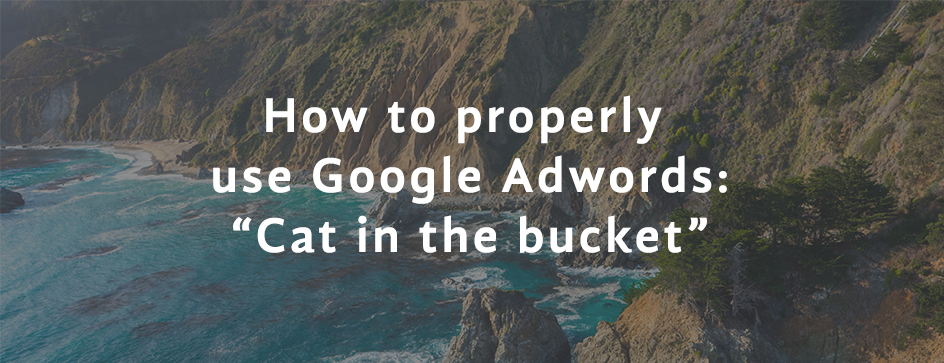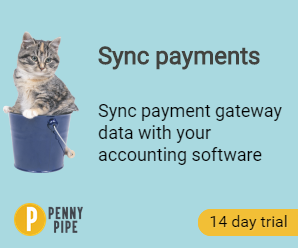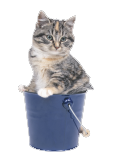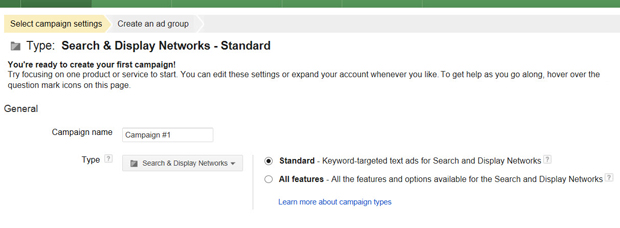How to properly use google adwords: the cat in a bucket campaign
Posted on September 3, 2015 by Patrick Sheegog

So, we're not marketing experts at PennyPipe. We're two techy people trying to solve accounting problems and save folks time. That being the case, we're always exploring new ideas that may or may not have the greatest returns. Enter the "Cat in a bucket" Google adwords campaign.

Would you say no to that face?
So you need to market a product that helps people but don't have much of a budget. Maybe you're bootstrapping like we are or just trying to run lean. There are certainly easy wins like online communities where people are begging for help, your circle of peers that always listen to your ideas, and local organizations where you already have your roots. What about those cold introductions where you just have to jump and hope you land on your feet? Google adwords is one way to go about that, if you do it the right way.
Why Adwords?
Google adwords has a great history of getting eyeballs on new products for a relatively low price but its glory days are well behind it. We wanted to see what all the fuss is(was) about and gave it a shot anyways. I mean, it's Google right? We chose a "standard" Google Adwords campaign (a mistake) and started choosing keywords we've been hammering on the blog "integrate, sync, payment gateway, accounting" all of that good stuff. After a little bit of tweaking we used the neat tool that Google Adwords uses to scrape content off your website to pick an appropriate color, font, and image to use in your ad.
Google created this:

"Not bad Google robot", I said to myself, but then I thought about how I feel when an ad on the side of my screen. I don't care 98% of the time. The 2% is when animated dinosaurs pop up awkwardly. So, thinking of this adorable Woofoo dinosaur ad I feverishly looked through Google's stock photo collection. Among the few gems I also found some embarrassingly outdated images (exhibited below shamelessly).



And then I found this beautiful creature:

It was a cat in a bucket, and I loved it.
I thought to myself, who wouldn't click on that adorable cat in a bucket; the internet loves cats sitting in things. So I feverishly polished the text and pushed our Google Adwords ad live, letting it flow through the internet for a few days before checking back in.
In the end, I was right about the internet loving cats. We received 20% more clicks with the cat in the bucket campaign then our normal graphic. The problem is these users were only interested in this cat in a bucket and not truly interested in the product. The bounce rate was immensely high, around 90% and most users didn't stay long enough to read more than the first sentence of our website. The valuable lesson here is not just driving random cat loving clicks to your site, but attract your target market. In our case it was business owners who need to automate accounting reconciliation in the cloud. That being said, I do think this campaign could have been successful if we did a little bit more leg work.
Turning click-bait to a connection
To make these Google adventurers feel more at home we could have made a landing page that connected with our visitor. On that page we would come clean, admit we were being dishonest with this click-bait bucket cat and then try for a sale or even a recommendation. Something like an infographic leveraging cats and buckets to explain our process of reconciling accounting data. This kind of sense of humor and commitment to the joke could have showed our human side and helped us connect with these random visitors. Emotional connections in advertising create brand evangelists for the future not to mention it may just get your cat in a bucket landing page linked across the internet in a viral fashion.
Optimimizing some simple Google Adwords settings
To be fair this ad was doomed to fail, to no fault of our adorably contained feline friend, but because our "Campaign settings" in Google Adwords were not ideal.

1. You have an option to select the "global display network", "google search traffic" or both. We naively chose "both", because more is better right? Well, we should have read up that you need to make very targeted ads for each network. Simply put, if you are trying to sell a product with a limited marketing budget then favor "search". If you are doing public awareness for your brand or selling a product with a lengthy sales process then go with "display network". Here's a very informative article about the differences.
2. Don't go with the "standard" settings, click "all features" instead. This will allow you to select target languages. In one example, if you're in the US the standard settings will show your ad in Canada with French language audiences also. We could have easily saved some money if we had just targeted the right audiences of high value leads. This is an article that goes further into the details along with a few other helpful tips.
Best of luck in your Adwords adventures, here's to hoping you could gain something from our (adorable) mistake.
Did you learn something new or, dare I say, feel entertained? Show some love and follow us on Twitter.